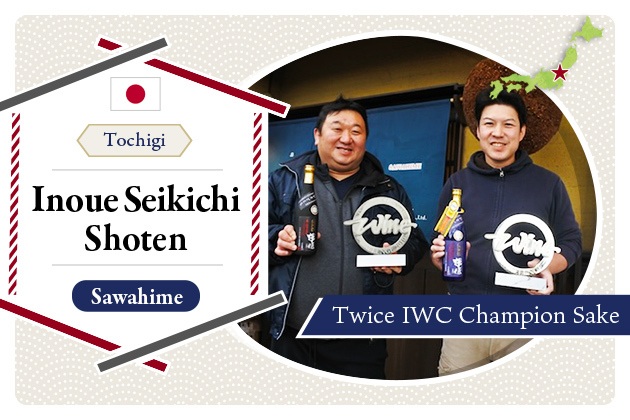
2024.10
30
What is Craft Sake? From the Original Meaning to How It Is Used These Days
In recent years, the term "craft sake" has gained popularity in discussions about Japanese sake. However, there is no legal definition, and the term is used to describe a wide range of products. In this article, we will explore various examples to better understand what craft sake truly means.
The original meaning of “craft”
Handicrafts and other items that express a handmade feel
The term "craft" in "craft sake" is derived from the English word "craft." According to the Longman Contemporary English Dictionary, it refers to:
a job or activity in which you make things with your hands, and that you usually need skill to do
In other words, "craft" carries the nuance of something handmade on a small scale, as opposed to mass production in large factories, and is closely related to the concept of "craftsmanship."
"Craft brewery" in the US refers to a small-scale brewery
In the United States, home to the largest number of craft breweries in the world, "craft beer" is a recognized category, and craft brewers are defined by the following three key elements:
Small
Annual production of 6 million barrels of beer or less (approximately 3 percent of U.S. annual sales). Beer production is attributed to a brewer according to rules of alternating proprietorships.
Independent
Less than 25 percent of the craft brewery is owned or controlled (or equivalent economic interest) by a beverage alcohol industry member that is not itself a craft brewer.
Brewer
Holds a Brewer’s Notice issued by the Alcohol & Tobacco Tax & Trade Bureau, or its successor, or control the intellectual property for one or more brands of beer, have that brand or brands brewed for it in the United States, and have as its primary business purpose the resale of the brand or brands it controls.
Reference: Craft Brewer Definition by the Brewers Association
Furthermore, the Brewers Association, a U.S.-based organization that established this definition, highlights keywords such as "innovation" and "very involved in their communities" as core concepts associated with craft brewers.
“Craft” used by Japanese beverage manufacturers
Japanese beverage manufacturers have also adopted the keyword "craft" to develop new products, including craft beer, craft gin, and craft cola. While the term "craft" carries nuances unique to native English speakers, what specific meaning does it hold in Japan?
Handmade
The term is also used to highlight that the sake is produced at a small brewery, emphasizing its handmade nature and craftsmanship, distinguishing it from the mechanized production methods of larger manufacturers. In English-speaking countries, the use of "craft sake" for jizake (local sake) serves to differentiate locally made sake from mass-produced varieties.
Small production
Similar to the definition of craft beer in the U.S., the term "craft" is often used to indicate that the product is made at a small brewery. It serves as a keyword that emphasizes scarcity, highlighting factors such as limited production and distribution.
Dedication
Some products labeled "craft" are produced by major manufacturers, yet they do not fit the categories of "handmade" or "small production." In these cases, the term likely implies a greater focus on detail and technology compared to standard products. However, in the U.S., there has been criticism of this use of the "craft" label, with some mockingly referring to it as "crafty beer."
So, what is craft sake?
So, what does "craft sake" actually mean? The truth is, there is no legal definition, and the term is used differently by various companies and organizations. Let’s explore a few examples to understand how it’s being applied in different contexts.
Japan Craft Sake Breweries Association
In 2022, the Craft Sake Brewery Association was founded, centered around the Ine to Agave Brewery in Oga City, Akita Prefecture. This association defines "craft sake" as a new genre of alcohol made from rice, utilizing production techniques based on traditional sake but incorporating methods that are not legally permitted in conventional sake brewing.
The creation of "craft sake" stems from the fact that, in modern Japan, new licenses for sake production are not issued. This category includes beverages made by young brewers eager to produce sake, but **which cannot legally be called sake due to the addition of secondary ingredients (1) or the exclusive use of koji rice (2). Although these craft sake closely resemble traditional sake, they are legally classified as "other brewed alcohol."
1: According to the Liquor Tax Law, sake is defined as "a fermented mixture of rice, rice koji, and water that has been pressed." If other ingredients are added during fermentation, the product is classified as "other brewed alcohol."
2: For the reason mentioned in *1, legally, sake must be made by combining both steamed rice and koji rice. Therefore, sake made solely from koji rice is classified as "other brewed alcohol."
Additionally, doburoku is classified as "other brewed alcohol" because it does not meet the "pressed" requirement in the definition of sake. As a result, many craft sake breweries produce doburoku, but since doburoku has its own unique name and has been made for centuries, it is not necessarily referred to as "craft sake."
For your information, when referring to this “craft sake” in English, the author suggests capitalizing the term "Craft Sake" to distinguish it from sake produced through traditional methods.
Craft sake as a trademark
In Japan, the trademark for the katakana term "クラフトサケ" (craft sake) was acquired in 2013 by Motox, a company that wholesales wine and other alcoholic beverages. Motox defines craft sake as "alcohol that is beloved globally, like wine, and developed in collaboration with sake brewers," including its private brand products created with various breweries.
The Japan Craft Sake Breweries Association was established with permission from Motox Co.
JAPAN CRAFT SAKE COMPANY
The Japan Craft Sake Company, led by former soccer player Hidetoshi Nakata, hosts an event called "CRAFT SAKE WEEK," where attendees can sample carefully selected sake from across Japan. In this context, the term "craft sake" is understood to carry the same meaning as the English word "craft," referring to sake that is handmade with the spirit of true craftsmanship.
Summary
As you can see, the term "craft sake" carries multiple meanings. However, just as the definition of nihonshu was redefined in 2015 as a Geographical Indication—"sake made in Japan from Japanese rice"—the definition of craft sake may also evolve in the future. It is also possible that the legal definition of sake will be re-examined, leading to what is currently called Craft Sake being categorized alongside traditional sake.
The term "craft sake" itself is based on the English word "sake," which originates from the Japanese word "酒 (sake)," used broadly to refer to alcoholic beverages. Currently, "sake" is used internationally to refer to Japanese sake and similar beverages, but this term lacks an official definition. For example, in the U.S. and other countries, beverages made with added fruit juice or flavors are also called "sake" (under Japanese liquor laws, these would be classified as "liqueurs" or similar).
Much like the establishment of an official definition for Japanese whisky in 2021, aligned with international whisky standards, the global expansion of sake may eventually lead to a legal definition for the term "sake."
As craft sake continues to encompass a wide range of meanings, and as new beverages emerge, it's worth keeping an eye on how this term evolves in the future.
Pickup Articles
2019.01.18
2019.01.25
Trending Articles
Popular Articles
Recent Articles













